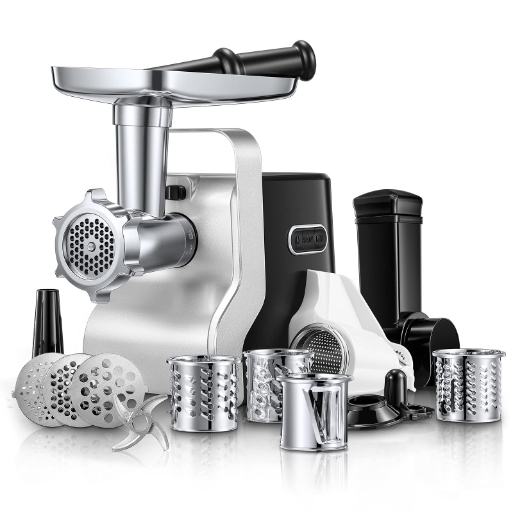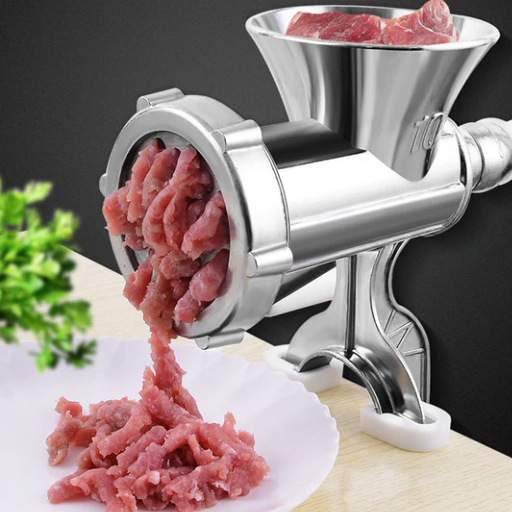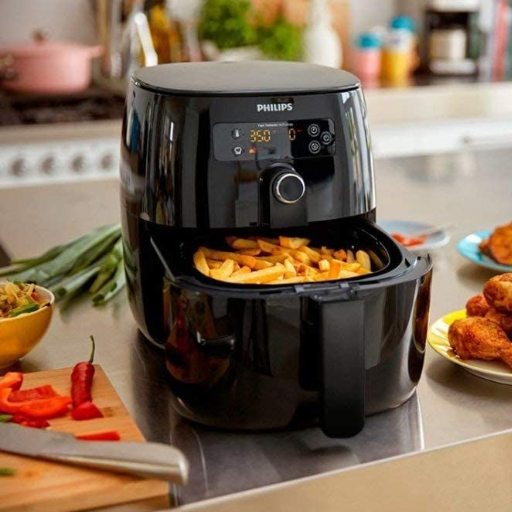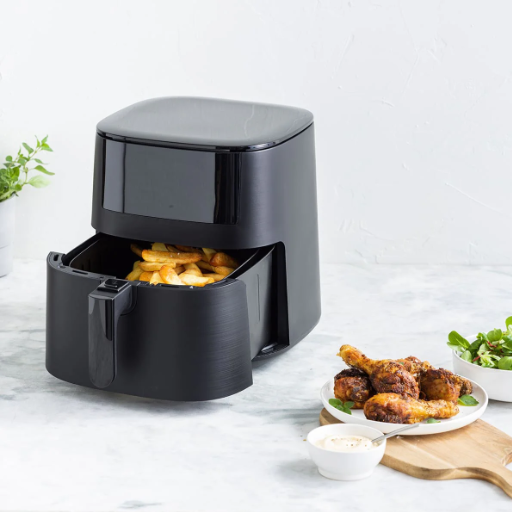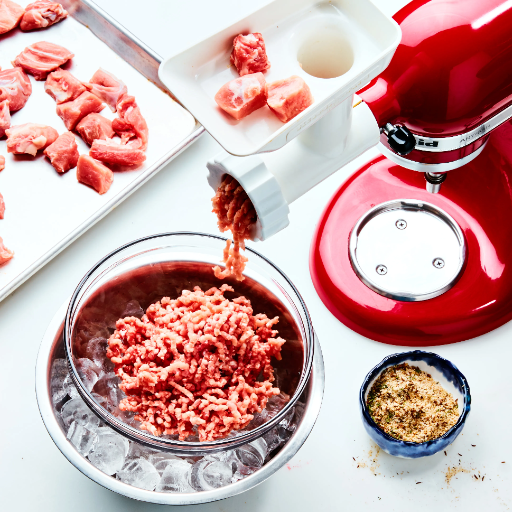Having the right cooking blender in your kitchen is essential whether you are a home cook, health enthusiast, or a person that loves expertly blended smoothies. This guide details everything you need to know about the best cooking blenders that excel at crafting creamy smoothies, silky sauces, and hearty soups. From essential features to the best models available for purchase, our comprehensive analysis will help you hand-pick the ideal blender for your culinary needs. Get ready to transform your cooking experience while enhancing your culinary adventures!
What is a cooking blender and how does it work?

A cooking blender is a unique kitchen tool that blends, heats, and even cooks to make the preparation of soups, sauces, and purees effortless. It features powerful blending blades that are fused with heating elements or friction heat technology so that food can be cooked inside the blender’s jar. This convenience of cooking and blending simultaneously makes these blenders highly efficient as well as time-saving.
Understanding the concept of a cooking blender
it is clear a cooking blender is a true revolutionizer in modern kitchens. It combines blending and cooking into one single device, redefining convenience. The ability to heat and blend at the same time not only maximizes convenience, but also saves time when crafting a velvety soup or smooth baby puree. The precise and accurate technology behind these appliances makes them a one-size-fits-all solution for people of all skill levels.
Key features of a cooking blender
- Integrated Heating Element: Makes it possible to blend while cooking at the same time. Works well for soups, sauces, and purees.
- Versatile Preset Programs: touch settings for diverse recipes ensure ease and accuracy of use.
- Powerful Motor and Blades: Smooth and consistent results are achieved through the effortless handling of tough ingredients.
- Durable Construction: Those made from stainless steel and other high-grade materials serve the purpose of reliability and durability.
- User-Friendly Control Panel: Beginners need not struggle with complicated buttons and touch controls for straightforward operation.
How cooking blenders differ from regular blenders
The main distinction between cooking blenders and regular blenders is their ability to heat and cook ingredients on the appliance. Unlike blenders, which are solely for blending, mixing, and pureeing, cooking blenders come with a built-in thermostat, enabling you to effortlessly prepare soups, sauces, and hot drinks. This added functionality facilitates meal preparation while reducing the need for additional cookware, making them a universal selection for anyone trying to improve their kitchen routines.
What are the benefits of using a cooking blender?

When it comes to ease and efficiency in the kitchen, a cooking blender gives you max value. You are able to blend and cook ingredients with a single appliance, minimizing the time needed to clean up afterward. It also comes with preset programs, allowing you to save time on meal prep while ensuring consistent results for soups, sauces, and smoothies. Furthermore, cooking blenders allow users to make healthy, homemade recipes by letting you control the ingredients, thus leading to a more nutritious lifestyle.
Time-saving advantages for busy cooks
I fully believe that those who have fun multitasking will benefit dearly from cooking blenders. Their capability to blend, heat, and even cook at once shaves off incredible amounts of precious time. Rather than juggling several pots and appliances, these devices combine everything into one streamlined process. This means that busy cooks will have more time enjoying meals and less time cleaning up. The efficiency and convenience these blenders bring to meal prep is simply unmatched. In today’s world, these tools are invaluable, especially in our fast-paced society.
Versatility in preparing various dishes
Having worked for quite a long time in the cooking and kitchen equipment sector, I can clearly tell how remarkable the modern-day multi-functional cooking devices are. Their range of use is often described as versatile. These appliances have the equipment to satisfy a wide spectrum of cooking requirements, and therefore, are useful for almost every type of meal and cuisine. Let me outline the primary factors that make it possible:
- Multiple Cooking Functions
The appliances include steaming, sautéing, baking, and even pressure cooking or slow cooking. That means you can make everything from a great stew, to tender steamed veggies, to bread and everything else in between. With so many modes of cooking, the possibilities for new ideas and meals are limitless.
- Customizable Settings
A lot of devices let you set the temperature, how much pressure there is, and even how long the food will cook with utmost accuracy. This is great for anyone because you can achieve your perfect cooking result, and even for sauce lovers out there who simmer for hours, or if you are someone who whips up a stir-fry in minutes.
- Support for Different Cuisines
These appliances can make Italian Risottos, stir-fries with an Asian flare, or American barbecue that’s smoke flavoured. These devices make it easy and hassle-free to cook with different ingredients and styles. A big plus for those of you who love trying different cuisines from around the world.
- One-Pot Solutions
As the name states, the solution can be made in oregano, which means all the cooking can be done with only one pot or bowl. This saves sophistication and time and makes cooking more easy and friendly for those with little time to spare.
- Programmed Recipes
Some devices have their own settings that come pre-programmed, and these do things like yogurt, rice, and soup. With the push of a button, anyone can get the quality of a restaurant, simple as that.
This multi-purpose feature makes a household shift in home cooking activities straightforward as it is both used for daily cooking and ambitious culinary skills.
Energy efficiency compared to traditional cooking methods
Like multi-cookers and air fryers, modern kitchen devices are more energy efficient when compared to traditional cooking methods. These devices use precise temperature control, efficient heat distribution, and shorter cooking times to reduce energy consumption while delivering consistent results. These types of appliances concentrate heat in a closed system whereas standard ovens or stovetops lose heat to the surrounding environment, wasting energy and increasing utility bills.
Which are the best cooking blenders on the market?

A few blenders truly stand out in the aspects of their performance, versatility, and durability, working together. One example of these is the Vitamix A3500 blender which has intuitive controls. I would recommend it as an excellent purchase because it would surely blend even the toughest of ingredients. The Breville Super Q blender also impresses with its quiet operation and serves a myriad of recipes effortlessly. Sculpting smoothies or soups will impressively be blended in no time. If you’re working with a tighter budget, I suggest you look at the Ninja Foodi Cold & Hot Blender because it offers superb functionality at a fraction of the price.
Top-rated deluxe cooking blenders
For best of the best deluxe cooking blenders, consider the Breville Super Q. Its performance, versatility, and silence set it apart from the rest. It works best for both beginner and advanced cooks. The Ninja Foodi Cold and Hot Blender is another strong rival which performs well and gives value for the money. Both these options are dependable and highly recommended for many culinary tasks.
Budget-friendly options for home cooks
Coming to budget options for home cooks, I suggest the NutriBullet Blender Combo as one of the most economical options available. It’s affordable and does a pretty good job blending smoothies or soups. The Hamilton Beach Power Elite blender is also affordable and works great for daily tasks. They provide quality service at a low cost, making them the perfect choices for home cooks.
Comparing features of popular cooking blender brands
In summarizing the details about top brands of cooking blenders, it’s clear that power, multifunctionality, ease of use, and strength are the most important factors to consider. For example, Vitamix performs incredibly well in power and durability, which makes it great for heavy duty tasks, but comes with a hefty price tag. Ninja blenders are a perfect blend of price and performance, offering features such as their Auto-iQ programs for customized blending. More affordable options such as Hamilton Beach are great for everyday use, but do fall short technologically. At the end of the day, one’s choice boils down to the budget and the performance features needed.
How to choose the right cooking blender for your needs?

I understand that picking the right cooking blender can be daunting. In my experience, setting a goal for your blender helps. For example, if you happen to be a regular cook who prepares tough meals with nuts and frozen fruits, you may want to consider investing in a Vitamix. If you need something a little less expensive, but still have a lot of features, I recommend Ninja blenders. And for those simple, daily, mundane tasks, Hamilton Beach may suit you perfectly. Finding a good cooking blender is all about what you want to get out of it and how much you’re willing to spend for it. Knowing the answer to those two questions will ensure you make the right choice for your kitchen.
Considering power and speed settings
The most basic functions, such as creating smoothies or purees, should only require 500 watts while more power intensive tasks such as crushing ice or blending fibrous vegetables will need 1000+ watts. Power and speed settings need to be evaluated properly to achieve the best possible results. Having multiple speed settings provides perfect control, while the added pulse function gives the user even more precision, ensuring every recipe turns out perfect.
Evaluating container size and material
Container sizes and materials should reflect your requirements and way of living. Large containers, sized 64 – 72 ounces, make more sense for family or batch cooking as they are easier to use. For compact storage or individual servings, smaller containers around 32 ounces would be great. It is also important to consider the material. While scratch resistant glass containers are odorless, BPA free plastic containers are much lighter and unbreakable, which is desirable in a frantic kitchen. Ultimately, it boils down to your preferences and how the containers would fit your daily life.
Assessing additional features and accessories
Think about blending experience when considering additional features and accessories. Ensure that the equipment has pre-programmed modes and variable speed settings for easier handling of more complex recipes. While narrower size personal blending cups or smaller jars allow easy single serving processing, tamper tools are vital for thicker mixture processing. In quieter households, the noise reduction technology can be a real game changer, whilst during day-to-day use, components that are easy to clean will save time. Maximizing the benefits that can be obtained from a blender comes from features that suit an individual’s lifestyle or cooking requirements.
What can you make with a cooking blender?

I can prepare a wide selection of dishes and drinks that satisfy various tastes and dietary requirements using a cooking blender. The options are limitless – from silky-smooth soups and hearty stews, to creamy nut butter and nutrient-packed smoothies. I also love cooking sauces that can be transformed into sauces, rich dips, and even dipping desserts like puddings and frozen goodies. Blending and heating all in one appliance saves so much time because you are able to spend less time and effort while creating recipes bursting with flavor.
Exploring soup and sauce recipes
nothing excites me more than creating soup and sauce recipes with a good quality blender. Preparing soups and sauces can be some of the most versatile and gratifying dishes, and when done correctly, you ensure a healthy, delicious, and fulfilling outcome. This is what I have learned from my time in the kitchen:
- Texture Control – An excellent blender often gives full control over the texture of every soup and sauce. For instance, when preparing my smooth and velvety tomato soup, I blend it until I know it has been pureed perfectly. In contrast, for my chunky vegetable soup, I only pulse the ingredients a few times because I want to maintain that chunky texture.
- Temperature Capabilities – The ability to heat soups while blending is one great feature of advanced blenders. It’s hard to forget the first time I used a blender with a powerful motor. I was amazed as I was able to serve piping hot soup from the blender. The friction heat truly is incredible. That muscle is such a timesaver!
- Ingredient Compatibility -The performance of my blender heavily dictates if I choose roasted vegetables with a smoky flavor or raw nuts that create a creamy base for sauces. It is crucial for the ingredients to be blended evenly so there is not an overpowering dominance of flavor. For instance, a cashew-based Alfredo sauce calls for a lot of blending to create that silky, flawless sauce without the annoying grit.
- Batch Size Options -Not only do I appreciate the variety of sauces and soups I am able to create, but I also enjoy the flexibility of the amount. Be it a single serving bisque or a larger batch of marinara sauce, I want to store, the blender is always ready for the task at hand.
- Convenience in Cleanup – What I enjoy the most about experimenting is how simple it is to clean up with a self-cleaning blender. For instance, after blending tomato basil soup, all I need to do is put warm water and a drop of dish soap into the blender, run it for a few seconds, and it is good to go for the next use.
If I examine the following parameters ‘texture’, ‘temperature’, ‘ingredient compatibility’, ‘batch size options’ and ‘cleanup’, I find it very easy to prepare unlimited soups and sauces. The right tools enable me to be creative while also simplifying and making cooking enjoyable.
Creating smooth and creamy smoothies
My constant approach to having smooth and thick smoothies is making sure that the ingredients used are well balanced and a high-quality blender is used. My initial combination consists of frozen fruits and a liquid base like almond milk or coconut water, which I like to use in a 2:1 ratio. To give the smoothie that smooth feel, I also like to throw in sa coop of yogurt, frozen banana, and occasionally a handful of soaked cashews. I make sure to blend everything together at the maximum speed so that there are no lumps in the smoothie. Following this method guarantees consistency and ensures that the taste of each ingredient is well balanced and vibrant.
Preparing homemade nut butters and baby food
Making nut butter and baby food from scratch is easy and focuses on health. To make nut butters, raw nuts should be roasted to improve taste. Afterward, blend the nuts at a high speed until smooth. A pinch of salt or drizzle of oil can be added if needed. To make baby food, steam fruits and vegetables until tender and blend into a puree. The texture can be adjusted with breast milk or filtered water. These techniques minimize the loss of nutrients and ingredients, making delicious and healthy meals for your family.
How to clean and maintain your cooking blender?

You may think your cleaning and maintaining your cooking blender takes a lot of effort, but it doesn’t have to. As an avid cooking enthusiast who uses the blender on a daily basis, I will offer some advice that might be a game-changer. Make sure to always clean the blender right after use, this will prevent any food residue from hardening. Start by pouring some warm water into the jar, add a drop of dish soap, and blend on high for 30 seconds. Rinse thoroughly. If your blender requires a deeper clean, take apart the blades and gaskets, soak them in hot soapy water, and scrub them with a brush. Always check the seals, as well as the other parts that undergo wear and tear, so you don’t run into issues later. And, as a golden rule, always dry everything before putting the blender back together. A bit of time invested in maintenance ensures the best results for years to come.
Step-by-step cleaning instructions
- Rinse Immediately After Use: Combine all the components of the blender together and add warm water and a drop of detergent into the jar. Blend at high speed for 30 seconds. Finally, rinse carefully.
- Disassemble Components: Separate the blades and gasket from the base and remove any additional pieces that can be detached.
- Soak and Scrub: Place the separated items in warm water mixed with soap. Take a brush and begin to scrub the holes and edges of the blades where dirt could be stuck.
- Clean the Jar and Base: Wipe the jar and motor base with a damp cloth or sponge. Do not submerge the base in water as it contains electrical components.
- Dry Thoroughly: Use a clean towel to pat all of the parts dry or completely air-dry until no moisture is left before putting everything back together.
- Inspect Regularly: For best performance, check and replace parts if they are damaged or worn out.
Tips for maintaining blade sharpness
Keeping blades sharp is key to making sure your blender works optimally, and I will share a few tips I have learned over the years. First, try to avoid blending hard, non-food items like frozen chunks or ice without any liquid as they tend to dull blades quickly. Second, I advise that you rinse the blades immediately after use while the food is still fresh to avoid food residue hardening, which in turn makes cleaning more abrasive and damaging over time. Lastly, I would recommend buying a blade sharpener and doing the sharpening manually periodically or professionally if you start noticing a dip in efficiency. Following these tips will definitely improve the lifespan and effectiveness of your blender blades.
Troubleshooting common issues
While familiarizing yourself with common blender repairs, the first thing to do is to figure out what is causing the problem. If the blender refuses to turn on, start with checking out the power socket. Make sure the blend is plugged in, and check the power cord for any damages. In case of decreased blending efficiency, make sure the jar is not overfilled, and confirm the blades are not dull nor blocked by any residue. If the blender is leaking, then assess the sealing gasket to see if it needs replacement due to wear and tear, and vice gentle misalignment of the gasket. If you hear strange sounds, that usually means some parts have come loose, so double check that all parts are properly fastened. Promptly identifying these issues lets you comfortably use your blender without worrying about any additional problems.
Are cooking blenders worth the investment?

I would say that the cooking blenders are worth the expenditure for many homes. These appliances facilitate the preparation of meals by performing multiple tasks like blend, chop, and even cook within a single device. Their capability of preparing hot soups and smoothies as well as sauces, makes them effortless in terms of saving time and energy when working in the kitchen. The cost might be a bit higher at first, however, the long-term investment benefits paired with its versatility and durability definitely makes it an essential piece of equipment for any chef in the house.
Comparing costs with traditional cooking appliances
In the long run, choosing a blender with a cooking feature is the most sensible because it saves money. Even though the initial cost of a cooking blender is higher than a single traditional appliance, its multiple features mean that a blender, food processor, and even a stovetop do not need to be bought separately. This not only saves money, but also cuts down on kitchen clutter, achieves energy efficiency, and is smarter financially for modern households.
Long-term benefits for health-conscious individuals
While familiarizing yourself with common blender repairs, the first thing to do is to figure out what is causing the problem. If the blender refuses to turn on, start with checking out the power socket. Make sure the blend is plugged in, and check the power cord for any damages. In case of decreased blending efficiency, make sure the jar is not overfilled, and confirm the blades are not dull nor blocked by any residue. If the blender is leaking, then assess the sealing gasket to see if it needs replacement due to wear and tear and vise gentle misalignment of the gasket. If you hear strange sounds, that usually means some parts have come loose, so double check that all parts are properly fastened. Promptly identifying these issues lets you comfortably use your blender without worrying about any additional problems.
Potential drawbacks to consider
One downside to cooking blenders is their initial payment, with quality models blenders sometimes being costly. For those with not a lot of counter space, the size of this appliance could also be a problem. Lastly, the different features and settings on the blender may pose a challenge to adapt to, but given time, most users should be able to overcome this hurdle.
Reference
- Bon Appétit: The Best Blenders for Smoothies, Soups, and Slushy Drinks
- Food & Wine: The 6 Best Blenders, According to Our Tests
- Homes & Gardens: Best Blender 2025 – Chef-Tested for Smoothies, Soup & Ice
Frequently Asked Questions (FAQs)
Q: What features should I look for in the best blender for smoothies, soups, and sauces?
A: The best blender for smoothies, soups, and sauces should have high-speed blending capabilities, a powerful motor, variable speed settings, and preset programs. Look for features like stainless steel blades, a large pitcher capacity, and the ability to crush ice. Some models also offer attachments for food processing and come with dishwasher-safe parts for easy cleaning.
Q: Can a countertop blender handle both hot soups and frozen smoothies?
A: Yes, many high-quality countertop blenders can handle both hot soups and frozen smoothies. Look for blenders with heat-resistant pitchers and vented lids to safely blend hot liquids. For frozen smoothies, ensure the blender has enough power to crush ice and frozen fruits. Some models even have preset programs for both hot soups and frozen drinks.
Q: What’s the difference between a countertop blender and an immersion blender?
A: Countertop blenders, also known as pitcher blenders, have a fixed base with a motor and a removable pitcher. They’re ideal for larger batches and can handle tougher blending tasks. Immersion blenders, also called stick blenders or hand blenders, are handheld devices that you immerse directly into the container with your ingredients. They’re more portable and better suited for smaller tasks or blending directly in pots.
Q: Are personal blenders like NutriBullet good for making smoothies?
A: Personal blenders like NutriBullet are excellent for making individual smoothies. They’re compact, easy to use, and often come with travel cups for on-the-go convenience. While they may not have all the features of larger countertop blenders, they’re perfect for quick, single-serve smoothies and are often powerful enough to blend frozen fruits and crush ice.
Q: How important is the motor power in a blender?
A: Motor power is crucial in a blender, especially for tasks like crushing ice, blending frozen fruits, and making smooth purees. Higher wattage generally indicates more power, with many high-performance blenders ranging from 1000 to 1500 watts. However, power isn’t everything; blade design and overall construction also play significant roles in blending efficiency.
Q: Can I use my blender to make hot soups?
A: Many high-end blenders can not only blend hot ingredients but also heat them through friction. Look for blenders with “hot soup” or “soup” preset programs. When blending hot liquids, always ensure your blender has a vented lid to allow steam to escape. Some models can blend and cook soups from cold ingredients, making them versatile kitchen appliances.
Q: How do I clean my blender properly?
A: For easy cleaning, rinse the blender immediately after use. Many blenders have a self-cleaning feature: fill the pitcher halfway with warm water, add 1-2 drops of liquid dish soap, and blend on high for 30 seconds. For thorough cleaning, disassemble the parts and wash them with soapy water or in the dishwasher if they’re dishwasher-safe. Always refer to the manufacturer’s instructions for specific cleaning guidelines.
Q: What blender accessories are useful for making sauces?
A: Useful blender accessories for making sauces include a tamper to push ingredients towards the blades, a smaller jar for processing smaller quantities, and a fine-mesh strainer attachment for smoother sauces. Some blenders come with food processor attachments, which can be helpful for chopping and mixing sauce ingredients. A cleaning brush can also be handy for cleaning around the blades after making thick sauces.

